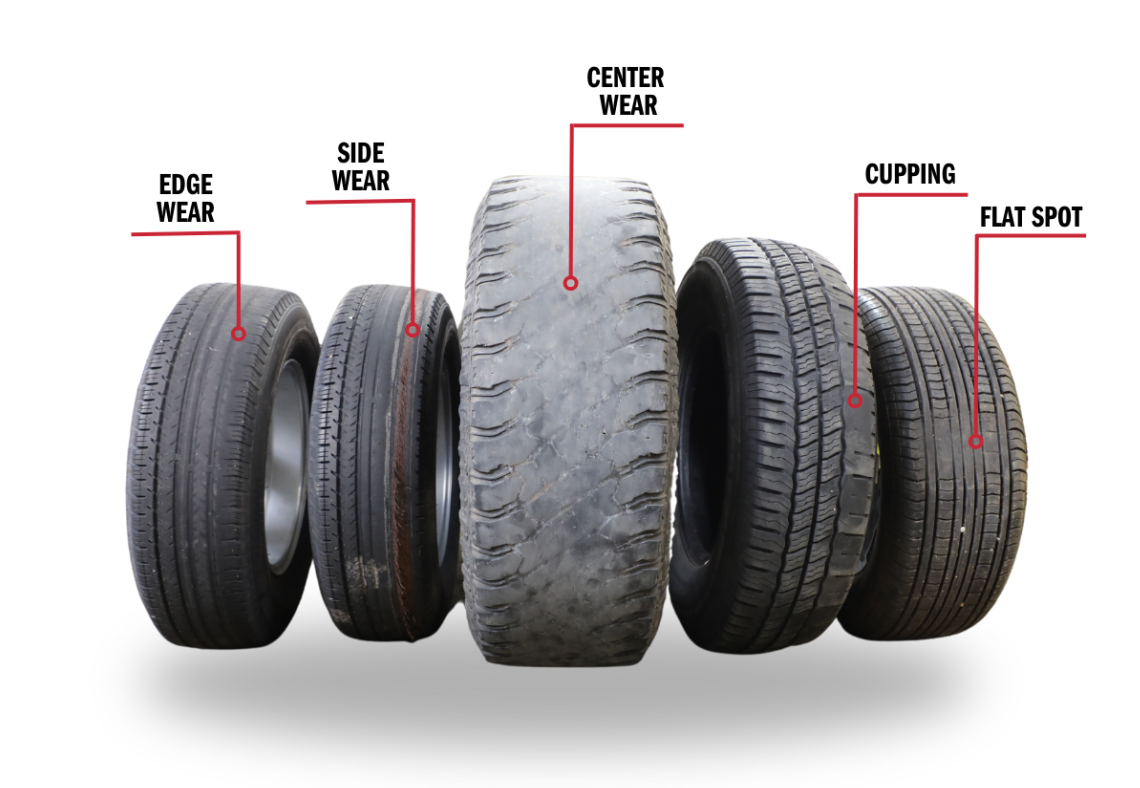How To Diagnose Tire Wear Patterns
Understanding tire wear patterns is crucial in ensuring the safety and longevity of your trailer. In this article, we will discuss the most common tire wear patterns: center wear, edge wear, inside wear, toe wear, cupping, and flat spots. You will learn how to identify each pattern, diagnose issues, and determine how to fix the problem. From improper inflation levels to incorrect installation, overloaded trailers, or alignment toe and camber of trailer running gear, we will review the common causes behind tire problems. Our general recommendation is to replace your tires at least every five years, even if they have low use. Tires exhibiting signs of weathering or aging will also require maintenance or service. If you identify any of the tire wear patterns discussed, take your trailer to a local service center for maintenance.
TIRE MAINTENANCE SCHEDULE
Dexter recommends inspecting your tire pressure weekly and checking the condition of your tires every 3 months or 3,000 miles. Our Light Duty Service Manual provides a complete maintenance schedule and instructions for the recommended maintenance.
TIRE WEAR IDENTIFICATION

EDGE WEAR
Edge wear is shown by excessive wear on both sides of the tire. This is usually a sign of underinflation. Refer to the trailer manufacturer’s recommended Cold Tire Inflation Pressure. Never exceed the Maximum Cold Tire Inflation Pressure listed on the tire sidewall.
CENTER WEAR
Center wear is diagnosed by excessive wear in the middle of the tire. This is usually caused by overinflation of the tire. Refer to the trailer manufacturer’s recommended Cold Tire Inflation Pressure. Never exceed the Maximum Cold Tire Inflation Pressure listed on the tire sidewall.
CUPPING
Tire cupping is identified by patches of uneven wear across the entire tread pattern spaced along the tire. This can signify your tires being out of balance or your bearings needing adjustment, causing your tires to wobble. If you see cupping on your tires, you will need to have your bearings and tires inspected at a qualified service center.
FLAT SPOT
Flat spots are identified by a section of the tire tread that is noticeably thinner than the rest of the tire. If you notice flat spots on your trailer’s tires, it can be caused by wheel lockup or tire skidding. You must have your brakes or brake controller inspected at a qualified service center.
TOE WEAR
Toe wear is an uneven wear pattern between the inside and outside of the tire. Typically seen on one tire or a set of tires on the same axle. This should not be confused with inside wear or loss of axle camber, usually shown on all tires of the trailer. Toe wear is a sign of a tire not tracking in the same direction as other tires on your trailer, and your trailer needs to be inspected immediately at a qualified service center.
Jump to Top
Category
Disclaimer of Warranty and Limitation of Liability
The material provided by Dexter® is intended for informational purposes only. The information on these pages is provided on an "as is" basis without warranty of any kind, either expressed or implied, including without limitation warranties. Dexter® assumes no liability or responsibility for any errors or omissions in the website's content. Dexter® shall not be liable for damages(whether compensatory, punitive, direct, indirect, special, incidental, or consequential) to any user regarding the website content. Any user agrees to indemnify and hold Dexter® harmless from any and all claims, actions, or other proceedings (including attorney fees and court costs) arising out of the use of the website.
Contact
Learn more about Dexter®, send inquiries, request for information, or ask questions.
Reach Out